Robots compete in response to California disaster simulation
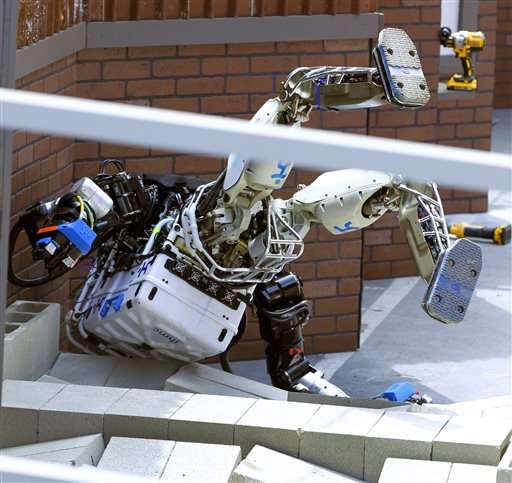
It's shaping up to be a snail's pace race featuring cutting-edge robots doing simple but critical tasks.
Robots in the disaster response competition in California must push buttons, turn valves, cut through a wall and drive a light utility vehicle.
The winning design team will collect a $2 million research award along with bragging rights in the rapidly developing robotics industry.
"We get most of our ideas about robotics from science fiction. And we want to show a little bit of science fact," said Gill Pratt, who organized the competition for the U.S. Defense Advanced Research Projects Agency, which focuses on futuristic technologies for national security.
The contest runs Friday and Saturday at a Pomona racetrack designed to look like a disaster zone.
The robots may be slow, clumsy and delicate but they might just save lives someday by braving dangerous disaster zones. Pratt cited the 2011 Fukushima nuclear disaster in Japan as an emergency where such robots would have come in handy.
"Sometimes in a disaster, it is too dangerous for people to go in," he said.
Teams of engineers, programmers and designers from research institutions across the world have worked for years to build robots that can maneuver the course and complete the assigned tasks.
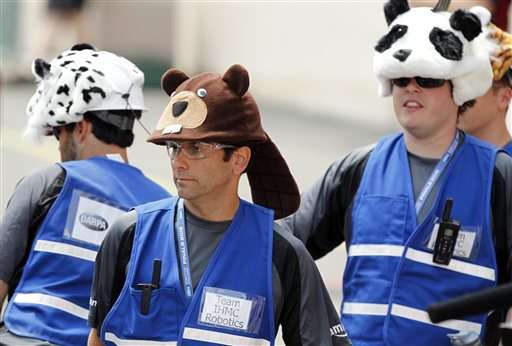
"We have a valve that we need to turn to shut off a gas leak or something similar," said John Seminatore, a Virginia Tech graduate student with Team Valor. "We have to cut a hole in a wall to get access to something behind it. And there will be either rough terrain or rubble that we get past."
The most difficult task—getting out of the small utility vehicle—is so hard that many teams aren't even attempting the dangerous egress, preferring to be docked on their times rather than risk toppling their robot into the dust.
"Robots don't have that sense of touch that humans do to know where they are inside the car," Seminatore said. "So it's going to be really nerve-racking for teams because the training wheels have come off."
The robots come in all shapes and sizes. Most appear humanoid but some can switch to wheels to get around.
"RoboSimian" looks like a double-jointed monkey without a head. Another has a torso on a 4-wheeled base, like a centaur. Several teams used DARPA's Atlas robot as a start for their own designs.
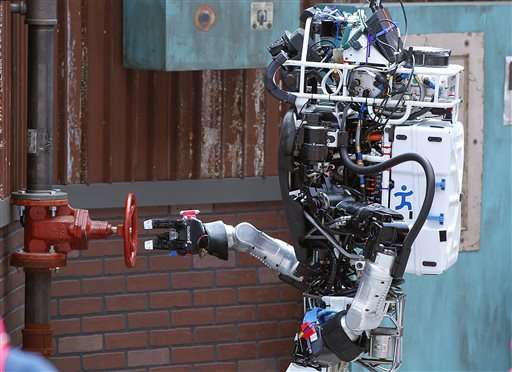
"This robot weighs almost 400 pounds with the battery and hydraulics," Cassie Moreira of Boston Dynamics said as she worked on the knees of a robot from the Massachusetts Institute of Technology.
DARPA's first robot competition in 2004 was a race for driverless cars. None of the entries finished and most made it only a few miles. But 11 years later, Google's driverless cars are cruising. Pratt says that means the competitions are a success.
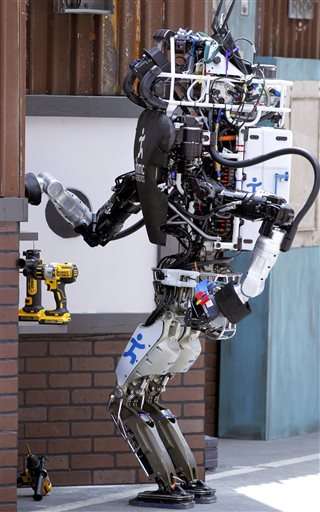
So even if the robots struggle to exit a car this year, their designers will learn. And when DARPA issues a challenge and invites the public to watch the results, it means the Pentagon's "mad science" division is serious about disaster response robots.
"What I love about this is it introduces everybody to the new dream. This is something you can do right now," said Jonathan Daniels, who teaches robotics at the University of Nevada, Las Vegas. "Give me five years and we'll have this in high schools."
-
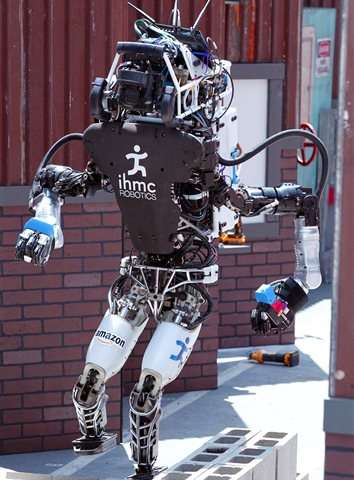
Robot Running Man from the Florida Institute for Human and Machine Cognition walks over unstable bricks for a second time, after falling on the first try, during the competition in the U.S. Defense Advanced Research Projects Agency Robotics Challenge in Pomona, Calif., Friday, June 5, 2015. Robots from 24 teams are taking part in a two-day contest hosted by the U.S. Defense Advanced Research Projects Agency, DARPA, to prove their performance in different tasks during a simulated disaster course. (AP Photo/Alex Gallardo) -
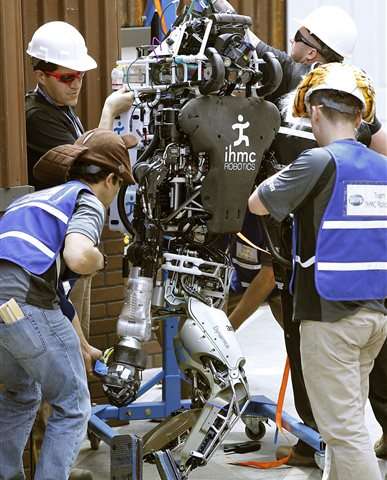
Robot Running Man from the Florida Institute for Human and Machine Cognition is hoisted upright after falling during the competition in the U.S. Defense Advanced Research Projects Agency Robotics Challenge in Pomona, Calif., Friday, June 5, 2015. Robots from 24 teams are taking part in a two-day contest hosted by the U.S. Defense Advanced Research Projects Agency, DARPA, to prove their performance in different tasks during a simulated disaster course. (AP Photo/Alex Gallardo) -
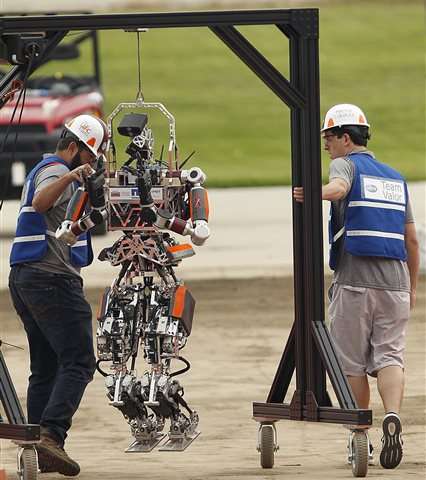
Virginia Tech College of Engineering members take their robot, Escher, to the beginning of the course during the first stage in the U.S. Defense Advanced Research Projects Agency Robotics Challenge in Pomona, Calif., Friday, June 5, 2015. Robots from 24 teams are taking part in a two-day contest hosted by the U.S. Defense Advanced Research Projects Agency, DARPA, to prove their performance in different tasks during a simulated disaster course. (AP Photo/Alex Gallardo)
© 2015 The Associated Press. All rights reserved.



















